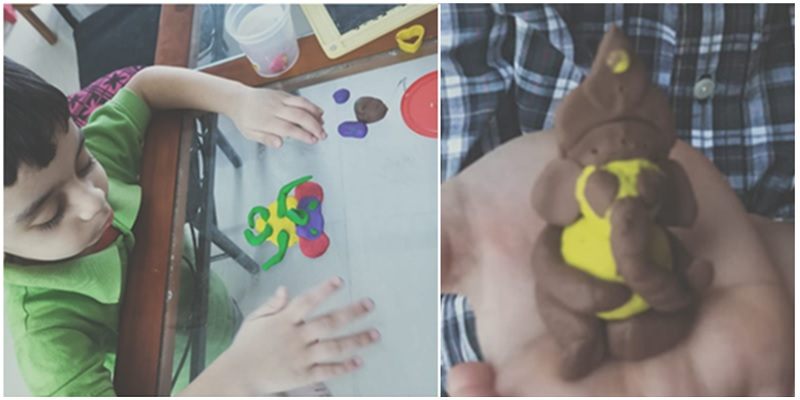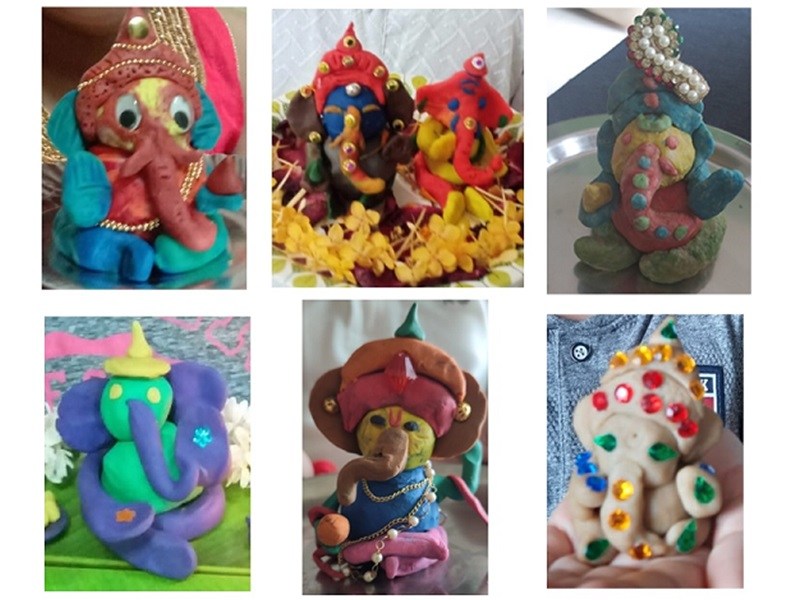
Ganesh Chaturthi festival, in India, is celebrated to mark the birth of the Hindu elephant-headed Lord Ganesha. Lord Ganesha is known for his wisdom (the big, elephant head signifies that) and that’s one of the reasons people seek his blessings before undertaking any new task. This is one of the biggest festivals in Maharashtra and the celebrations last for 11 days.
The Rituals
Ganesh festival (also known as Ganpati festival) is popular in the states of Maharashtra, Goa, Tamil Nadu, Karnataka, Odisha and Andhra Pradesh. However, to experience it the best and to gauge the scale of the festival, you have to be in Mumbai.
GET INSTANT HELP FROM EXPERTS!
- Looking for any kind of help on your academic work (essay, assignment, project)?
- Want us to review, proofread or tidy up your work?
- Want a helping hand so that you can focus on the more important tasks?
Hire us as project guide/assistant. Contact us for more information
Siddhivinayak Temple, the biggest one dedicated to Lord Ganesha, witnesses special celebrations to mark the event. Lalbaug cha Raja (the statue that is setup at Lalbaug – a place in Mumbai) is one of the most revered ones.
The festival begins with ‘Ganpati Sthapana’ (‘Sthapana’ in Hindi & Marathi means to set up the statue of Ganesha) of beautifully decorated statutes of Ganesha, either at homes or on podiums in various localities/communities; the community ones (known as ‘Sarwajanik’ in Hindi & Marathi) can be huge (10 to 15 feet).
Artisans usually start making the statues of Ganesha a month before the festival starts, but for the bigger ones the preparation can start several months before the event.
Every day prayers (known as ‘Aarti’) are offered to the god in the morning and the evening for those 11 days; its common for homes to keep the statues for 1 and half days; some even keep it for 5 days.
Offerings of sweets, flowers, rice, coconut, jaggery and coins are made to Lord Ganesh.
Those who get the Ganesha statue at home call over their friends and relatives to have a ‘Darshan’ (means to see and offer prayers) of the god.
How is it Celebrated?
Its the time when sweets are offered to everybody, in general, and you can hear devotional songs coming out from PA/loudspeakers in most neighborhoods.
After the prayers sweets Prayers are offered to god every day during the festival. Every day temples devoted to Lord Ganesha by organizing special events and prayers.
Its also very common for organizers (of the community ones) to conduct games & cultural events in the locality to encourage interaction among people during that time.
On the last day of the festival (known as Ananta Chaturdashi or Anant chaturthi), the statues are immersed in water (lakes, ponds, and the ocean). The statues are paraded through the streets, accompanied by dancing and music and finally immersed in water (before one last prayer).
‘Ganpati bappa morya pudhchya varshi lavkar ya’ (come back soon next year) chants can be heard all over Mumbai.
For many, its an extremely emotional moment as they let go of the statue to be immersed in the water, and pray in earnest for an early return next year.
Part of Off-beat Tours
Tourists in Mumbai who prefer to be part of off-beat tours get to see a glimpse of the festivities around Mumbai, during Ganpati festival. Lalbaugcha Raja (Lalbaug is place in Mumbai) is one of the most popular destinations in Mumbai during the festival, where the queue of people seeking a ‘darshan’ (glimpse) of the god can run into several kilometers.
GET INSTANT HELP FROM EXPERTS!
- Looking for any kind of help on your academic work (essay, assignment, project)?
- Want us to review, proofread or tidy up your work?
- Want a helping hand so that you can focus on the more important tasks?
Hire us as project guide/assistant. Contact us for more information
Several Bollywood celebs, including the Bachchans, come hear every year to offer their prayers and seek blessings.
The organizers there offer VIP passes for celebrities, and even to foreign travelers so that they can see the statue of the god using a separate queue, which is much shorter. For foreign tourists, the VIP pass can cost around $50 or so. In recent times, tourists from US, several European countries, Australia have paid a visit to ‘Lalbaugcha Raja’.
Tourists are also provided basic information about Ganpati (how he got the elephant head, why he rides a mouse, and so on). Tourists also get to knead the traditional ‘modaks’ (sweet) at a workshop conducted by the locals.
Foreign Tourists are advised to carry ear-plugs during such tours as the decibel level at certain places (loudspeakers or local bands playing traditional music) can be a bit high for them.
Girgaum chowpatty is the place where some of the biggest Ganesh statues are immersed on the last day of the festival. Thousands of people come out on the roads that lead to this place to have a last glimpse of the biggest and the most grandeur of Ganpati statues. The beach itself sees a ‘sea of people’ on the last day.
School Kids Make Eco-friendly Ganpati Idols
Schools are teaching their students the importance of caring for the environment. Most schools are now teaching the kids to make eco-friendly Ganpati idols.
Why Make Eco-Friendly Idols
Idols made of clay and mud easily dissolve in water during immersions minimising damage to nature.
“Although last year a court order did ask idol makers and artisans to turn green and do away with the plaster of paris and bright chemical- painted idols, PoP idols which are known to cause environmental hazards are not yet fully done away with. Instead of preaching to our elders it is wise to teach our next generation to celebrate and pray with eco- friendly idols.”
Special workshops are now conducted in schools to teach how to make eco-friendly Ganpati idols in order to drive the importance of protecting one’s environment.

How to Make Eco-Friendly Ganesh Idols
Ganeshotsav is the time to enjoy, celebrate, make wishes (and have them fulfilled too) as its the time when or dear friend Ganpati Bappa makes his presence felt. Here are some eco-friendly Ganesh idols made by kids as part of Ganpati celebration.
In recent years, schools have been organizing clay workshops to help students learn to make eco-friendly Ganesh idols.
Here are the materials you need to make an eco-friendly Ganesh idol.
1. Colourful clay (if clay is not available students can use dough)
2. Toothpick
3. Plate
4. Decorative materials, flowers, leaves
That’s all you need to make eco-friendly Ganeshas. Rest let your creativity do the work. Here are some samples.

Clay Workshops for Children
Let your child create his/her own Ganesha this Ganesh Chaturthi. Besides having fun, its an opportunity to know more about the festival and also learn few skills.
Kids can now attend “play with clay” workshops, where they can learn to mould clay to make their own little Ganesha.
Manipulating clay into Ganesha will also help children develop hand-and-eye coordination and very important fine motor skills. All kids will get to take their creations home.
So join a workshop to play with clay and to create little Ganesha to celebrate Ganesh Chaturthi.
GET INSTANT HELP FROM EXPERTS!
- Looking for any kind of help on your academic work (essay, assignment, project)?
- Want us to review, proofread or tidy up your work?
- Want a helping hand so that you can focus on the more important tasks?
StudyMumbai.com is an educational resource for students, parents, and teachers, with special focus on Mumbai. Our staff includes educators with several years of experience. Our mission is to simplify learning and to provide free education. Read more about us.

Leave a Reply
You must be logged in to post a comment.